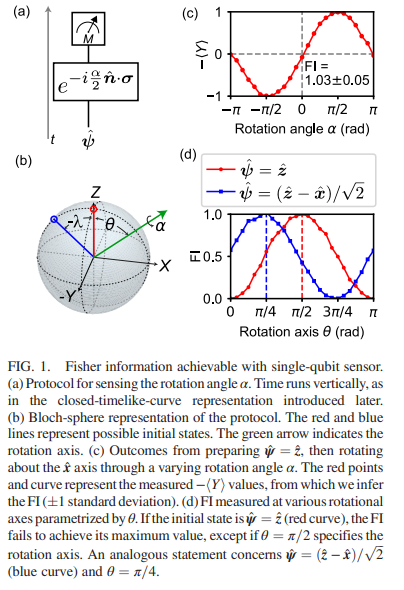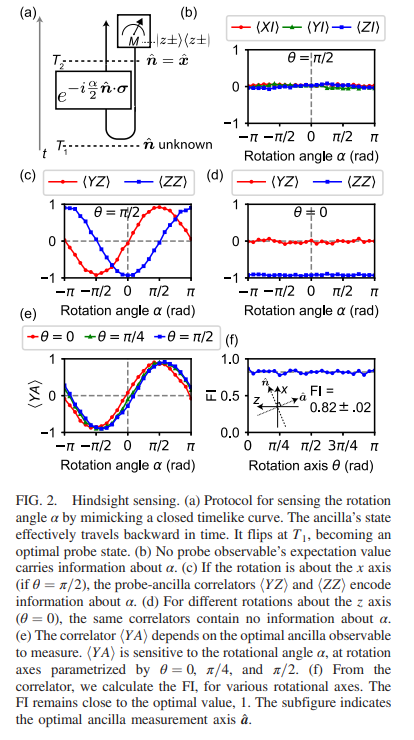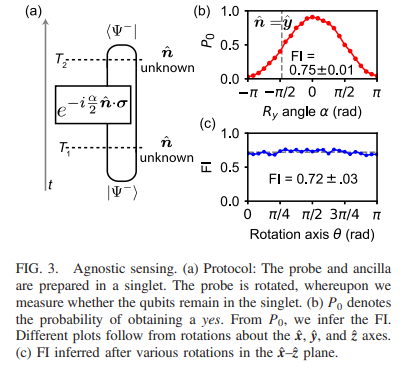Agnostic Phase Estimation
2024-06-27 09:19
959 浏览
The goal of quantum metrology is to improve measurements’ sensitivities by harnessing quantum
resources. Metrologists often aim to maximize the quantum Fisher information, which bounds the
measurement setup’s sensitivity. In studies of fundamental limits on metrology, a paradigmatic setup
features a qubit (spin-half system) subject to an unknown rotation. One obtains the maximal quantum
Fisher information about the rotation if the spin begins in a state that maximizes the variance of the rotationinducing operator. If the rotation axis is unknown, however, no optimal single-qubit sensor can be prepared.
Inspired by simulations of closed timelike curves, we circumvent this limitation. We obtain the maximum
quantum Fisher information about a rotation angle, regardless of the unknown rotation axis. To achieve this
result, we initially entangle the probe qubit with an ancilla qubit. Then, we measure the pair in an entangled
basis, obtaining more information about the rotation angle than any single-qubit sensor can achieve. We
demonstrate this metrological advantage using a two-qubit superconducting quantum processor. Our
measurement approach achieves a quantum advantage, outperforming every entanglement-free strategy.






Article:https://journals.aps.org/prl/abstract/10.1103/PhysRevLett.132.260801
